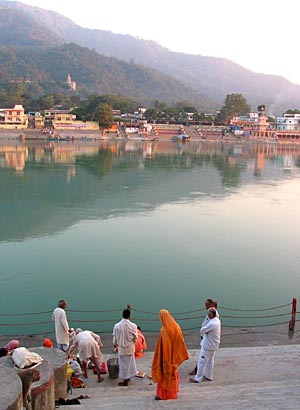 It is the worst nightmare of environmentalists across the world, but is the grim reality. A price we have to pay for unmindful exploitation of nature in the name of modern development. Policy makers, governments, industrialists have been ignoring the warnings about receding movement of glaciers for far too long.
It is the worst nightmare of environmentalists across the world, but is the grim reality. A price we have to pay for unmindful exploitation of nature in the name of modern development. Policy makers, governments, industrialists have been ignoring the warnings about receding movement of glaciers for far too long.
Now, with danger facing them in the eye, they don’t know what to do and are scrambling for cover. Climate change is resulting in ice caps across the world melting at a fast pace, leading to receding movement of glaciers and reducing water levels in the rivers. The number of fresh water sources across the world is reducing at a super-fast pace. The threat takes special proportions in India where majority populous has always depended on the Himalayan rivers for source of water and sustenance.

One such river, the Ganges aka Ganga which is revered and considered as the holiest of the all water bodies in the country is dyeing a slow death. Phenomenal pollution, over-exploitation of water, reduced inflow from tributaries and climatic changes are dealing death blows to the mighty river, on whose fecund plains live over one twelfth people of the earth’s population.
This deadly and grim reality was shown to the public by worldwide nature conservation and environmental research group WWF recently. According to a recently released WWF report, apart from Ganga, Indus, Nile and Yangtze also feature in the list of ten most endangered rivers of the world. WWF, ranked among the world’s largest and most experienced independent conservation organizations has over 5 million supporters and volunteers across the world. WWF has a global network active in over 100 nations, all working towards a common goal: to stop the degradation of earth’s natural environment and build a future in which humans live in harmony with nature. Since 1985, WWF has invested over US$1 billion (Rs.4,000 crore) in more than 12,000 projects worldwide.
WWF sources say that the Ganga basin comprises of nearly 33 percent of India’s land area and its rich soil has enabled millions to earn their livelihood on its banks. But these people who have derived immense benefits from the mighty river are killing the waterbody through indiscriminate water extraction, fishing, pollution etc. All along river, farmers and industrialists havce installed modern tube wells to draw water from the river as well as its basin.
Moreover state governments have built several dams along the course of the river and its tributaries to store water for irrigation. With drought during the past half a decade, the water levels in the river has reduced drastically. Now with global warming and reduction of water at the source it, the water levels in the Ganges is alarmingly reducing at a fast rate.
Global Climate change has added to the threat.
Commenting on this alarming phenomenon of dying rivers, WWF programme director Sejal Worah remarked:
Glaciers account for over 30 to 40 percent of water in the Ganga and this goes up to 70-80 percent in the case of Indus. Studies are required to gauge the impact of melting glaciers on the flow.
The death of rivers like Ganga is not impacting human life alone, numerous species of life forms are in danger. Ganga’s degeneration will wipe out several species of aquatic and terrestrial creatures. For one, the river hosts over 140 fish species, 90 amphibian species and the endangered Ganga river dolphin.
Besides all this the river is held in great reverence by the Hindus and all along its banks are sited great pilgrim centers and big cities such as Rishikesh, Haridwar, Allahabad, etc.
Every national leader has extolled the river’s importance to the country. India’s first prime minister Jawahar Lal Nehru had once said,
From her source to the sea, from old times to new, the Ganga is the story of India’s civilisation.
WWF officials warn that people should take this report seriously and save the great river Ganges and our country.
According to WWF’s report on the world’s ten most endangered rivers, five of them are in Asia and remaining are sited in various parts of the world. The rivers include: Salween (Asia), Danube (Europe), La Plata (South America), Rio Grande (North America), Ganges (Asia), Indus (Asia), Nile (Africa), Murray/Darling (Australia), Mekong (Asia), and Yangtze (Asia).


